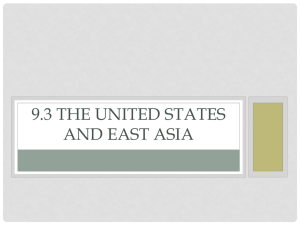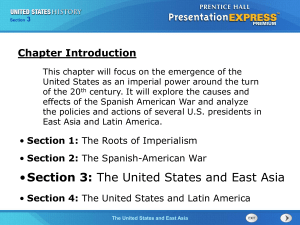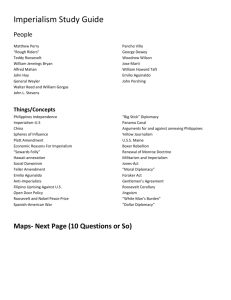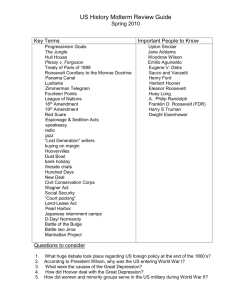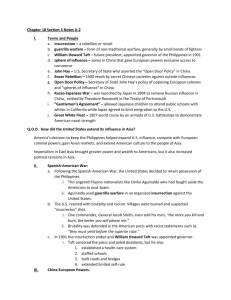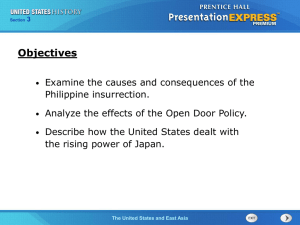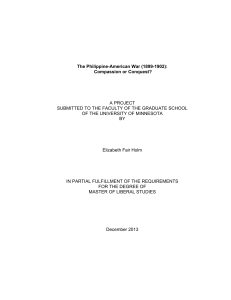18.3 The United States And East Asia During the Spanish
advertisement
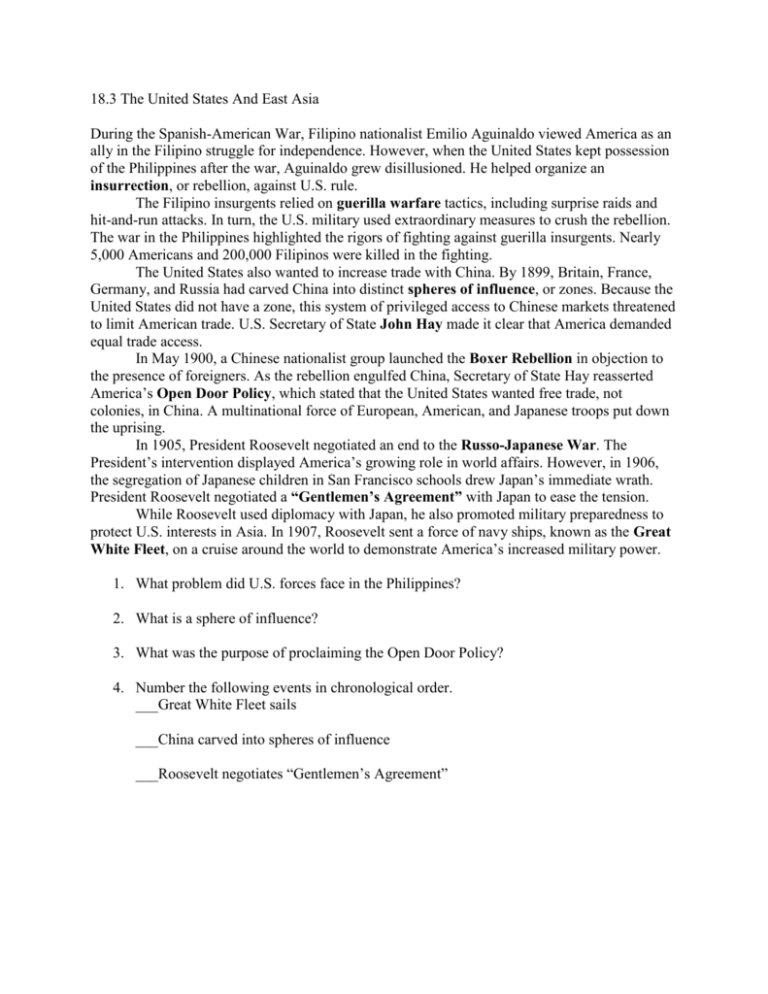
18.3 The United States And East Asia During the Spanish-American War, Filipino nationalist Emilio Aguinaldo viewed America as an ally in the Filipino struggle for independence. However, when the United States kept possession of the Philippines after the war, Aguinaldo grew disillusioned. He helped organize an insurrection, or rebellion, against U.S. rule. The Filipino insurgents relied on guerilla warfare tactics, including surprise raids and hit-and-run attacks. In turn, the U.S. military used extraordinary measures to crush the rebellion. The war in the Philippines highlighted the rigors of fighting against guerilla insurgents. Nearly 5,000 Americans and 200,000 Filipinos were killed in the fighting. The United States also wanted to increase trade with China. By 1899, Britain, France, Germany, and Russia had carved China into distinct spheres of influence, or zones. Because the United States did not have a zone, this system of privileged access to Chinese markets threatened to limit American trade. U.S. Secretary of State John Hay made it clear that America demanded equal trade access. In May 1900, a Chinese nationalist group launched the Boxer Rebellion in objection to the presence of foreigners. As the rebellion engulfed China, Secretary of State Hay reasserted America’s Open Door Policy, which stated that the United States wanted free trade, not colonies, in China. A multinational force of European, American, and Japanese troops put down the uprising. In 1905, President Roosevelt negotiated an end to the Russo-Japanese War. The President’s intervention displayed America’s growing role in world affairs. However, in 1906, the segregation of Japanese children in San Francisco schools drew Japan’s immediate wrath. President Roosevelt negotiated a “Gentlemen’s Agreement” with Japan to ease the tension. While Roosevelt used diplomacy with Japan, he also promoted military preparedness to protect U.S. interests in Asia. In 1907, Roosevelt sent a force of navy ships, known as the Great White Fleet, on a cruise around the world to demonstrate America’s increased military power. 1. What problem did U.S. forces face in the Philippines? 2. What is a sphere of influence? 3. What was the purpose of proclaiming the Open Door Policy? 4. Number the following events in chronological order. ___Great White Fleet sails ___China carved into spheres of influence ___Roosevelt negotiates “Gentlemen’s Agreement”

